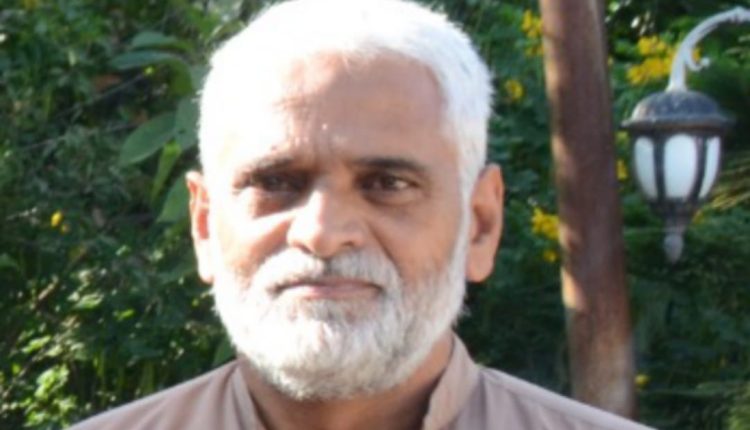By Mushtaq Hussain
In Indian-occupied Jammu and Kashmir, a systematic campaign is underway — one that goes far beyond politics. It is a calculated ideological offensive aimed at reshaping the region’s cultural and civilizational identity. Since the abrogation of Articles 370 and 35A of the Indian Constitution on August 5, 2019, New Delhi has pursued a deliberate strategy to erase the Muslim-majority character of Kashmir and impose an exclusivist, Hindutva-inspired cultural order.
A recent and revealing example of this policy surfaced at the Kashmir Literature Festival (KLF), inaugurated by Lieutenant Governor Manoj Sinha at the Sher-i-Kashmir International Conference Centre in Srinagar. In his address, Sinha urged writers to “correct historical narratives distorted by colonial biases through rigorous research and critique.” While such remarks appear scholarly on the surface, they are deeply ironic — the same administration, under Sinha’s directive, has banned nearly twenty-five books that document Kashmir’s authentic history, its Sufi heritage, and India’s record of state repression.
Several of those banned works were authored by non-Muslim writers who critically examined India’s cultural and military excesses in the region. The censorship reflects a larger agenda: to reinforce a state-approved version of history that erases Kashmir’s pluralistic and Islamic identity, replacing it with a homogenized Hindu civilizational narrative aligned with the RSS-BJP ideological framework.
Kashmir’s soul, however, has long been rooted in its centuries-old Sufi traditions. This land was enlightened by the spiritual teachings of Syed Abdul Rahman Shah Babul, Mir Syed Ali Hamadani, and Shamsuddin Iraqi— towering figures who brought not only Islam but also a philosophy of coexistence, compassion, and knowledge. Their legacy inspired Kashmir’s art of calligraphy, carpet weaving, papier-mâché, and poetry — crafts that became symbols of peace and refinement across South Asia. Today, that spiritual and cultural heritage stands threatened by a state-sponsored project of civilizational engineering.
India’s current policy in Kashmir is not limited to political control; it is an all-encompassing strategy of cultural, religious, and demographic transformation. Since the removal of Article 35A, which had previously protected local residency and land rights, the government has issued millions of domicile certificates to non-residents, granting them the right to purchase land and settle permanently in the territory. Former Chief Minister Mehbooba Mufti has publicly revealed that thousands of acres of land have been transferred to non-Kashmiris since 2019 — a move that experts describe as an attempt to alter the demographic composition of the Muslim-majority region.
Alongside these demographic measures, New Delhi has launched an offensive on Kashmir’s educational and linguistic heritage. School curricula have been revised to promote Hindi and Sanskrit over Urdu, while textbooks glorify a uniform “Indian national identity” at the expense of Kashmir’s distinct cultural and religious narrative. What was once a multi-ethnic, multi-religious society shaped by Sufi thought is now being reframed as a peripheral extension of Hindu civilization.
The state’s use of violence and impunity adds another dimension to this project. Human rights organizations have documented numerous fake encounters and extrajudicial killings of civilians since 2019. Even Dr. Sandeep Mawa, a local BJP leader, admitted that Indian security forces involved in fabricated encounters were rewarded with promotions and honors. Such revelations expose a chilling reality — that repression in Kashmir is not an anomaly but an institutionalized policy.
Religious discrimination has also intensified. Authorities have banned Eid, Milad-un-Nabi (PBUH), and Ashura processions, while Hindu festivals are celebrated under full state patronage. Historic mosques, including the Jamia Masjid in Srinagar, have been repeatedly shut down for Friday prayers. The pattern is unmistakable: the Indian state seeks to enforce a brand of religious uniformity that privileges the Hindu majority while marginalizing Muslims within their own homeland.
Collectively, these developments amount to a form of cultural colonization. India’s use of law, education, language, and religion as instruments of control mirrors classical colonial methods — only this time, the colonizer and the colonized share a contested history within the same subcontinent. This campaign, masquerading as “integration” and “development,” aims to dismantle Kashmir’s indigenous identity and replace it with a synthetic nationalism defined by the tenets of Hindutva.
For the international community, Kashmir is no longer just a territorial or political dispute. It has evolved into a test case for global human rights, religious freedom, and international law. If the United Nations, the European Union, and global human rights organizations continue to remain silent, that silence will amount to complicity in what can only be described as cultural genocide.
Yet, despite relentless oppression, the Kashmiri people remain steadfast in their struggle to preserve their heritage, faith, and dignity. For the conscientious voices across the world — journalists, academics, human rights defenders, and ordinary citizens — the challenge is to recognize Kashmir’s cry not as a regional grievance but as a universal call for justice.
Kashmir is not merely a piece of land. It is a symbol of spiritual harmony, cultural diversity, and human resilience — a symbol now under siege. If the world continues to look away, future generations may remember Kashmir not as the “Paradise on Earth” it once was, but as a cautionary tale — a civilization extinguished in silence by the machinery of modern colonialism.

